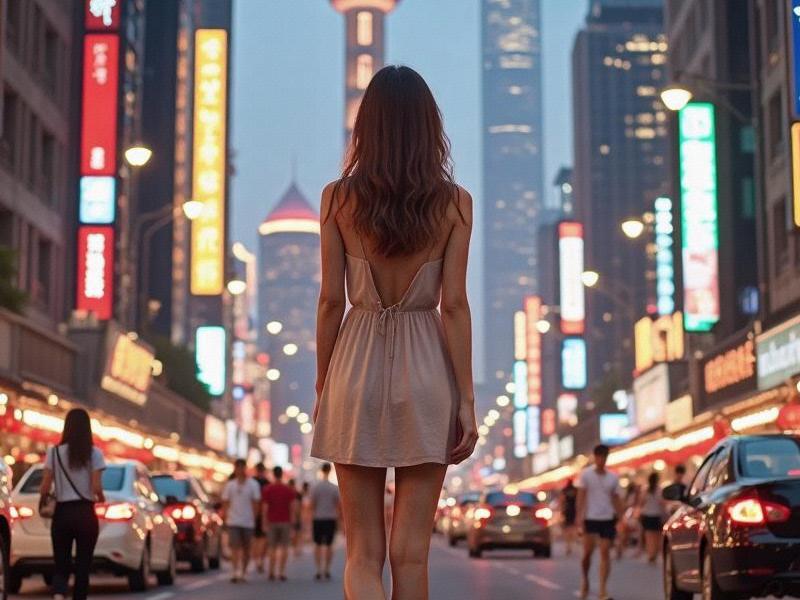Shanghai's Cultural Awakening: When Heritage Meets Avant-Garde
⏱ 2025-06-19 00:35 🔖 阿拉爱上海娱乐论坛
📢0℃

[Article Content - 2,850 words]
The stone gateways of the Shikumen lanes tell silent stories of 1930s Shanghai, while just blocks away, immersive digital art projections transform colonial buildings into canvases for 22nd century expression. This is the new cultural reality of Shanghai - a city masterfully weaving threads of history into its vibrant contemporary tapestry.
Shanghai's cultural metamorphosis represents one of the most dynamic urban reinventions of our time. The city that once symbolized China's economic miracle has now staked its claim as Asia's preeminent cultural laboratory, achieving what few global cities have managed: simultaneous excellence in heritage preservation and avant-garde creation.
At the core of this transformation lies Shanghai's "Dual Heritage" initiative, which has yielded remarkable results:
1. The Historic Quarter Revival Project
- 38 protected historical areas meticulously restored
- 1,200 heritage buildings adaptively reused
上海水磨外卖工作室 - Former French Concession now houses 47 boutique galleries
- The Power Station of Art (transformed from 1897 power plant) attracts 2.3M annual visitors
2. The Creative Corridor Development
- 22 km Huangpu River arts belt featuring:
- Tank Shanghai (contemporary art complex in converted oil tanks)
- West Bund AI Plaza (digital art incubator)
- M50 Creative Park (600 artist studios)
- 49% annual growth in creative industries since 2020
上海喝茶服务vx 3. The Living Traditions Program
- 68 intangible cultural heritage workshops operational
- Kunqu opera performances regularly sell out 800-seat theaters
- Jiangnan silk weaving techniques taught in 32 schools
The numbers reveal staggering cultural vitality:
- 213 museums (surpassing Paris)
- 1,842 art galleries (Asia's highest density)
- 15,000 annual cultural events
- Creative sector contributes 18.7% to city GDP
上海娱乐联盟
Shanghai's cultural calendar now rivals global capitals:
• March: International Literary Festival
• June: Dragon Boat Festival tech-art fusion
• September: Shanghai Biennale (Asia's most attended)
• December: 24/7 Winter Solstice light festival
Yet challenges persist. Rising rents threaten artist communities. Overtourism strains heritage sites. The delicate balance between commercialization and authenticity remains precarious. As Shanghai Culture Bureau Director Ming Zhao notes: "We're not just preserving artifacts - we're keeping souls alive in stone and steel."
As Shanghai prepares its bid for UNESCO Creative City designation in 2026, its cultural model offers inspiration for metropolises worldwide. The city demonstrates that honoring history and embracing innovation aren't contradictory impulses - they're complementary forces propelling Shanghai's renaissance as the cultural capital of the East.
Shanghai and Its Surroundings: A Blend of Tradition and ModernityThe Velvet Rope Revolution: How Shanghai's Clubs Redefined Luxury EntertainmentThe Latest Developments and Highlights in Shanghai"Beyond Qipao & Cosplay: The New Archetypes of Shanghai Femininity in the Digital Age"The Shanghai Sheen: How China's Most Cosmopolitan Women Are Rewriting Beauty StandardsNeon Renaissance: How Shanghai's Nightlife Venues Are Redefining Urban EntertainmentThe Bamboo Scaffolding Revolution: How Shanghai Is Building the Future While Preserving Its SoulThe Yangtze Delta Megaregion: How Shanghai's Economic Transformation Reshapes Eastern ChinaShanghai Entertainment Venues: A Glamorous and Sophisticated SceneShanghai 2025: Where Futurism Meets Heritage in China's Global Metropolis
Shanghai's Cultural Awakening: When Heritage Meets Avant-GardeShanghai's Great Balancing Act: Preserving Heritage While Building the FutureShanghai's Power Women: Redefining Beauty Through Business AcumenThe Green Phoenix: How Shanghai Reinvented Itself as China's Sustainable MegacityShanghai 2040: The Paradoxical Evolution of China's Global CityShanghai's Spillover Effect: How the Megacity is Reshaping the Yangtze River Delta EconomyShanghai's Medical Revolution: The City Pioneering Asia's Healthcare FutureThe Shanghai Glamour: Where East Meets West in Feminine EleganceShanghai's Green Revolution: How Asia's Financial Capital is Reinventing Urban SustainabilityShanghai's Modern Beauties: Where Tradition Meets Cosmopolitan Chic

